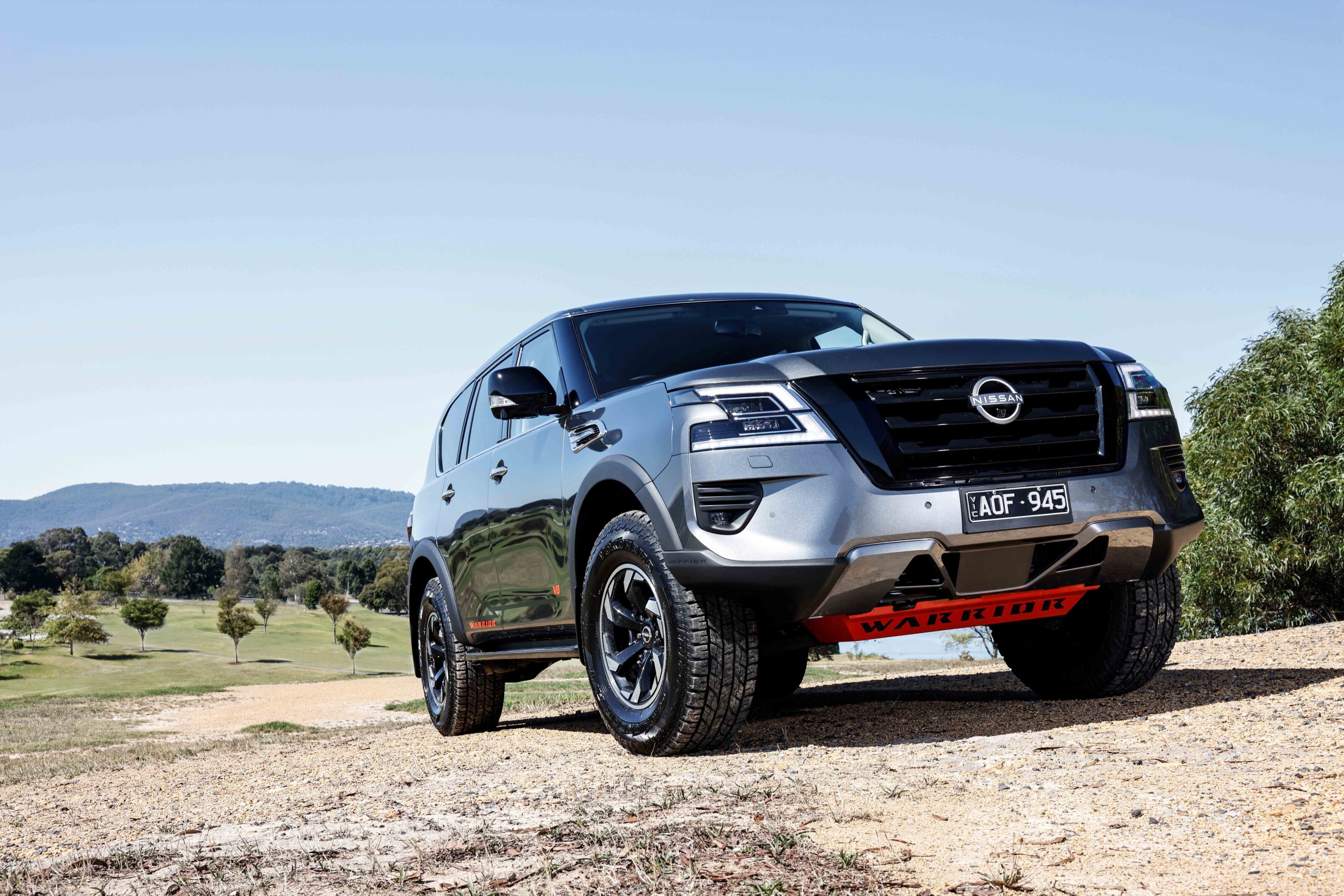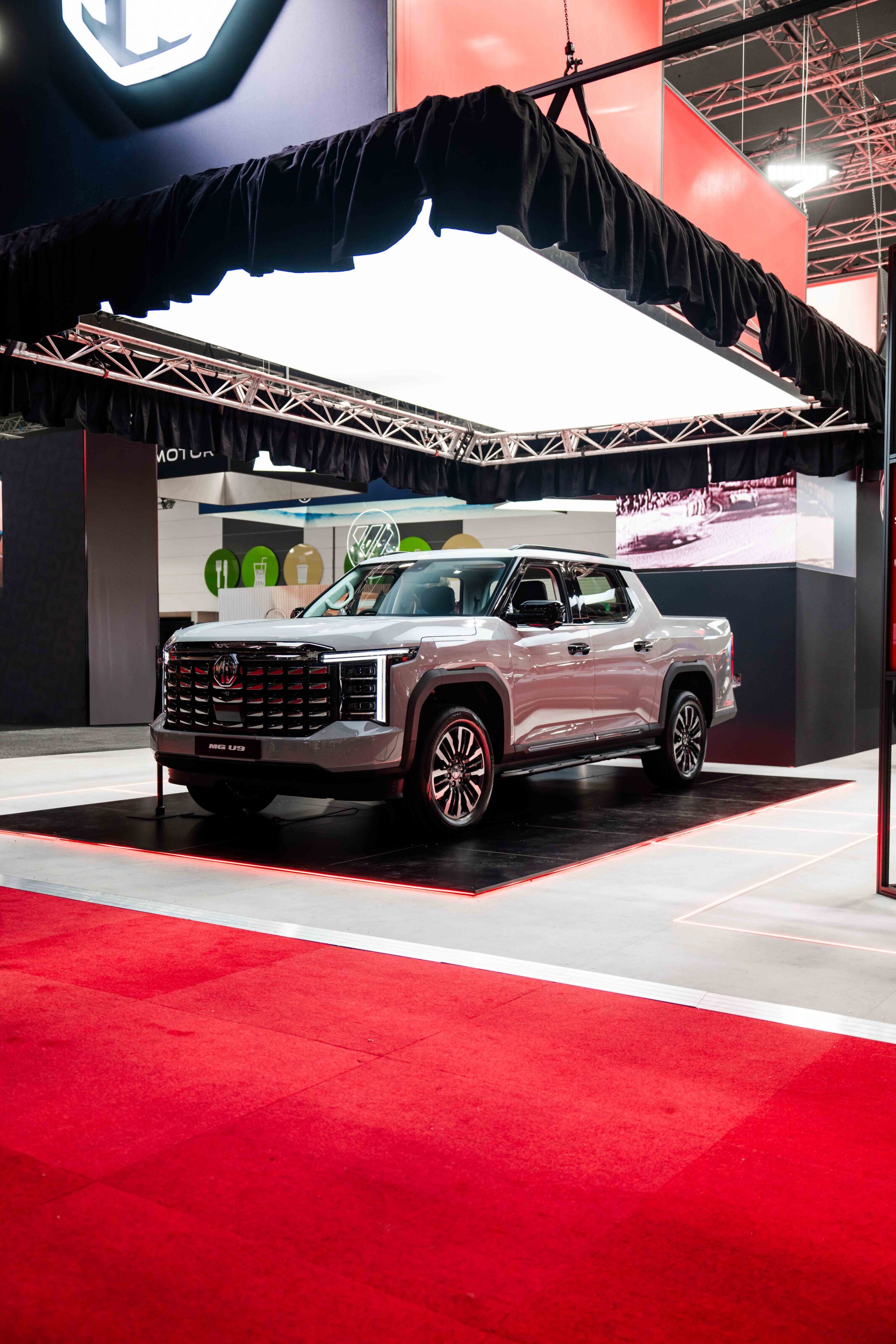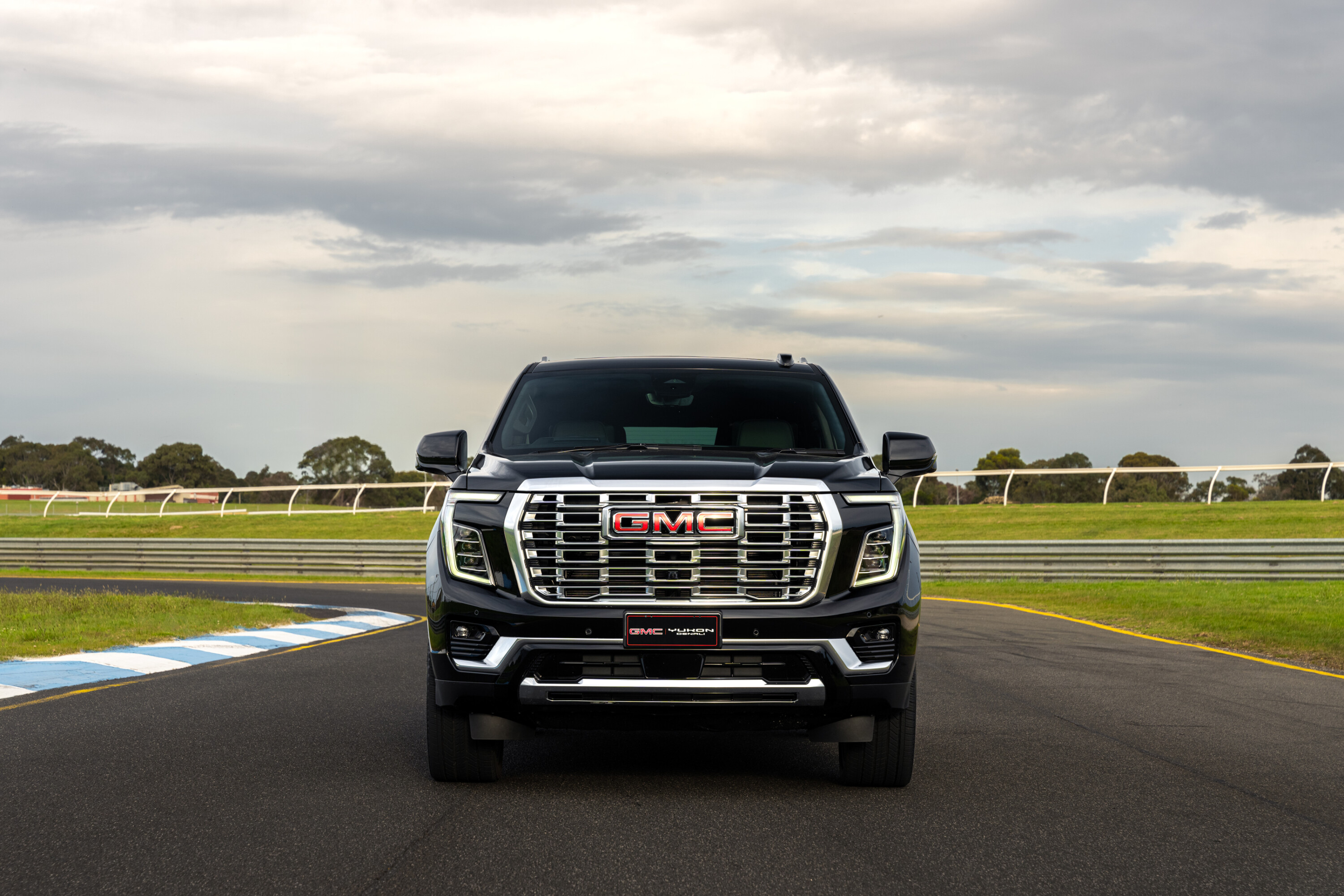Twenty-five years after the ‘4X4 Olympics’ were held in Australia, seven Land Rover Defenders recreate the gruelling off-road event.
The first Camel Trophy was held in 1980, when three Jeeps were driven by German teams from Belem to Santarem in Brazil. It was planned as a one-off event by the manufacturer of Camel cigarettes, RJ Reynolds, but it was so successful that the tobacco company decided to sponsor a similar event every year.
From 1981 until its demise in 1998, Land Rover products were used. Like anything to do with Land Rover, a fanaticism has grown up around the event, with people re-living the ‘Camel Trophy Spirit’ all over the world. They were held in Sumatra, Papua New Guinea, Zaire, Brazil, Borneo, Madagascar, Sulawesi, Siberia, Tanzania, Belize. And, of course, Australia – in March 1986. The vehicles used were Land Rover Defender 90s, with 110s as support.
Each year, teams from all over the world were selected from up to 1.5 million applicants. They came from countries as disparate as the Canary Islands and Malaysia. It was all voluntary with the applicants having to give up their time to participate in the country eliminations – designed to test athletic, engineering and driving prowess – which reduced the competitors to four per country. The final eliminations were held to select teams of two per country. And that was even before the event itself started.
It has been called the 4X4 Olympics, with gruelling tests of human endurance in Special Stages involving winching, building bridges and timed driving, to reproduce what could occur on an expedition in a competitive environment. Later, sports such as kayaking and mountain bike riding were added. Teamwork was crucial – not just with your partner, but with other competitors. In fact, the Team Spirit Award was more highly regarded than the trophy itself. In 1986, the trophy was carried off by the French team, but the Australian team of Glenn Jones and Ron Begg won the Team Spirit Award.
25 YEARS ON
George Edwards and Glen Davoren, long-time members of the Land Rover Owners’ Club of Sydney, felt it would be appropriate in 2011 to celebrate the 25th anniversary of the Australian event, by following the original route taken in 1986.
Many people have discussed re-running the Camel Trophy, but the problem has always been that there are no accurate records. Even the memories of people involved differ, so getting an accurate route has always been difficult. But this did not deter George and Glen.
Part of the research involved George, Glen and me travelling to Melbourne for the day to talk to John Ayre, Principal of MLR and ULR Land Rover dealers. John worked on the pre-scout trips and the event itself for nine Camel Trophies.
Other people contacted included Geoff Stubbs from Land Rover Australia (LRA) who was a judge on the original event and still works at LRA, and Derek Stringfellow who was a mechanic and now works at Harley Davidson, in Sydney. Both were able to give valuable insights. Glen also received a lot of help from the Cooktown Historical Society and the Northern Territory State Library. Of course, we were not going to re-create the Special Stages – after all, these are our vehicles and we needed them to get us home!
Vehicle choice and preparation was important. All vehicles had to have winches and carry two spare wheels and plenty of other spares and recovery gear. There could be no trailers and, of course, they all had to be Land Rover Defenders.
THE RE-CREATION
So it was that seven Defenders (see Participants, below right) met in Cairns on a Tuesday in July, ready to tackle as much as possible of the original route. Glen and George had arranged for us all to have signs for the front of our vehicles similar to the original Camel Trophy signs, with the inscription ‘1986-2011 Cairns-Darwin’.
Bright and early the next morning, we all lined up outside Trinity Motors, the local Land Rover dealer, for photos. Twenty-five years previously, the full fleet of 24 vehicles and 73 people, consisting of 28 participants and a contingent of mechanics, judges, journos and cooks, were flagged off by the president of RJ Reynolds.
We set off north towards Cooktown across the Daintree River and along the Bloomfield Track. This had only been opened 25 years ago amid much controversy, which led to complications for the original participants. Today, it’s a relatively easy 4X4 track leading to the Aboriginal settlement of Wujal Wujal, with its beautiful waterfall. After stopping for a beer at the Lions Den pub, we arrived in Cooktown for a night at one of the caravan parks.
A quarter of a century earlier, the whole town had turned out and put on a huge feast with a pig spit-roast, jacket potatoes, carrots, onions, damper and apple pie with custard for everyone. Most of us settled for a simple meal in camp, although some went to the pub for dinner.
Next morning, there was time to refuel, stock up on supplies and visit the lookout overlooking Cooktown before setting off toward Darwin. It wasn’t long before we came to our first challenge. The original route had been along the old railway line through the hills between Cooktown and Laura, but this has long since become impassable. However, there was a track marked that followed the line quite closely and passed a homestead that was recorded as being visited on the original event.
We hadn’t gone far, though, before we came to a badly washed-out bridge, with a road-closed sign. However, there was a well-used river crossing alongside and after one of the team waded across, it was agreed all the vehicles would make it through.
On to Laura and a beer at the pub. It was here that we encountered our first problem. One of the older vehicles had undergone an almost complete re-build before the trip. Unfortunately, a bush on the Panhard rod had been fitted incorrectly and had worn badly, resulting in dangerous steering. There was no way he was going to be able to continue. Fortunately, the owner of the store is a Land Rover fan and was happy to help, so the Panhard rod was removed, the vehicle left behind in the store and Glen drove to Cairns with the offending piece, arriving late at night.
Next morning, although it was a public holiday in Cairns, Col Webb at Hypertune Land Rover, agreed to open up for them and they were soon back at Laura putting the vehicle back together again. Meanwhile, the rest of us had enjoyed a relaxing day camped at the Little Laura River or visiting the Aboriginal art at Quinkan. ‘Stumpy’ at the pub had also been on to his mates all over the place and established that the track out through Palmerville from Maytown was open, as was the crossing of the Mitchell River at Highbury. However, the crossing over the Mitchell River at Dunbar, where the original event had crossed, had been washed away.
Day four of the re-creation saw us setting off to Maytown one day later than the original event. We were never able to catch up. We followed the Old Coach Road, whereas in 1986, this had been closed with fallen trees by environmentalists protesting against the event. They had been incensed at the creating of the Bloomfield Track and were not going to let a large group of 4X4s through. Consequently, the convoy had to go north to Fairview before heading back south through Palmerville and into Maytown.
We had our own problems on the Old Coach Road. One stretch was rocky and washed out, requiring extreme articulation from the suspension. Two of our convoy had aftermarket shock absorbers fitted, but unfortunately they did not match the springs which came out of their rear holders. This involved a lengthy halt because the repairs had to be affected on a downhill slope, requiring them being anchored by the winch of the vehicle behind. It wasn’t long after setting off again that one of the vehicles sprung its springs again, so it was decided to replace the shock absorbers with the original ones, and there were no more problems.
We camped that night in a clearing off the track and set off next morning for Maytown. It was here that one of the Special Stages had been held in 1986, involving a deep river crossing. The Australian team was first and made it through with some difficulty. However, the next two vehicles couldn’t get through and it was decided to abandon the test and the points that the Australian team had won were not counted!
After a brief inspection of the ruins and lunch by the Palmer River, we set off west again crossing the Palmer River which is wide and deep at this point, and for a while we were on the original track. However, between Palmerville and Dunbar, the original event had driven through private property which we had been unable to obtain permission to access. So we had to settle for a long detour north, then west and then south into King Junction Station – an overnight stop on the original event.
King Junction Station still provides camping with a shower for travellers. We were lucky because the Palmer River, on which the property sits, had only been crossable for five days. If it hadn’t been, we’d have had an even bigger detour. Next day saw us heading south towards the Mitchell River, before following station tracks along its northern side towards Highbury where we crossed it on the causeway. The original event had travelled much further west, all the way to Dunbar, but the crossing was now too deep and we couldn’t cross. This was ironic, because in 1986, the river had been so low that one of the Special Stages involving building rafts and transporting the vehicles across turned out to be a virtual non-event as the contestants were able to walk the rafts across! Next stop was Normanton where, 25 years ago, the Camel Trophy contestants camped at the airfield.
In the morning, we all stopped for fuel at the BP Service Station where we met Wayne, the owner, who remembered the original event well. He hadn’t expected to see them as it was the height of the wet season, and was surprised when they turned up.
We were now well and truly on the original track as we headed towards Burketown and the NT border, albeit under very different conditions. In 1986 the road was just two tracks in the sand – now it’s graded (even sealed in places) and caters for caravans.
We stopped for fuel at Hells Gate. The owners also remembered the event well. They had just opened and were trying to establish a lawn, but it was ruined by the teams trampling all over it (“worse than a herd of cattle”) and they had to start again!
At the border, the original event had turned north onto station tracks that are now closed and then worked its way west through a number of properties before rejoining what is now the Savannah Way near Borroloola. We had obtained special permission to travel on these original tracks, although we were warned that some of them hadn’t been used in years. Looking at all the maps, this was going to be the most interesting part of the trip, as there were a lot of creek crossings indicated, as well as a couple of large rivers.
For the next five days we battled through the scrub. This was certainly no time to be squeamish about the duco. The track started off well graded, but we soon came to the turn-off that the original participants had taken. The track was barely discernible, but using the GPS co-ordinates that George had plotted using topographic maps and Google Earth, it was not too difficult to find.
The countryside was spectacular – magnificent billabongs, creeks and trees. The sun was shining and the temperature was perfect. What could possibly go wrong?
One of the creeks we crossed was Camel Creek – an appropriately named spot for a camp – but we moved on. We soon came to a very nasty creek, with soft sand on both entry and exit. Glen, in the lead, came to a halt and we all aired down. From then on we kept our tyres low and proceeded with caution. About mid-afternoon, our luck ran out. The track became indistinct. Scouts were sent out on foot and after a while, it was picked up again and two people walked ahead, one on each track, as we all followed slowly behind. But even that didn’t work for long. As evening drew in, it was obvious we had lost the track completely, so we set up camp.
Next day, using GPS coordinates, we found the track again and continued to push through the undergrowth. Soon we had our only casualty – one of the vehicles snagged a branch underneath and ripped the fuel line out, bringing it to a halt. After a couple of hours of bush mechanics, we were ready to go again, but in the meantime, a search ahead had established the track was too overgrown, so we reluctantly turned back.
The next day, we approached this track from the other end and realised we had only failed to make it through by about four kilometres!
We then had another two days of remote camping and following tracks that were sometimes obscure and other times graded as we followed the route of the original Camel Trophy, before arriving at Borroloola where we had ice creams and booked into the caravan park.
From then on, it was an easy run to Darwin via Roper Bar – certainly much easier than it would have been 25 years ago. Unfortunately, as we were still trying to make up the lost day, we were unable to visit the many tourist spots along the way, such as Butterfly Springs and the Lost City. Half of us had been before and the other half all said they’d be back with their significant others.
But it was no good. The sun caught up with us and we had to have an enforced camp before arriving in Darwin in the late afternoon, one day late, and booking into the Darwin Free Spirit Resort.
After nearly 3500km and 14 days of off-road travel (just one more than the original event), we’d made it.
That evening, a cheery dinner was held in a quiet corner of the restaurant. Reminiscences of incidents were accompanied by lots of laughter. In 1986, Greg had applied to be part of the Australian event as had Daniel in the mid-90s. Both had been rejected, but had now finally managed to live out their dream.
Awards were handed out. The most prestigious – the Team Spirit Award – was deservedly presented to Daniel and Simon (the ‘Swiss Team’).
Bright and early the next morning we set off for the final group photo in the car park of the Casino – just as the original participants had done.
In the early stages of planning, I had been concerned about some of the unknown elements of the trip. But even though we crossed a number of over-the-bonnet creeks and some long stretches of very soft sand that required full concentration to keep the vehicles on track, the 4X4s all behaved superbly. The trip had been hard on people and vehicles alike, with some very long days, but we’d had a ball.





